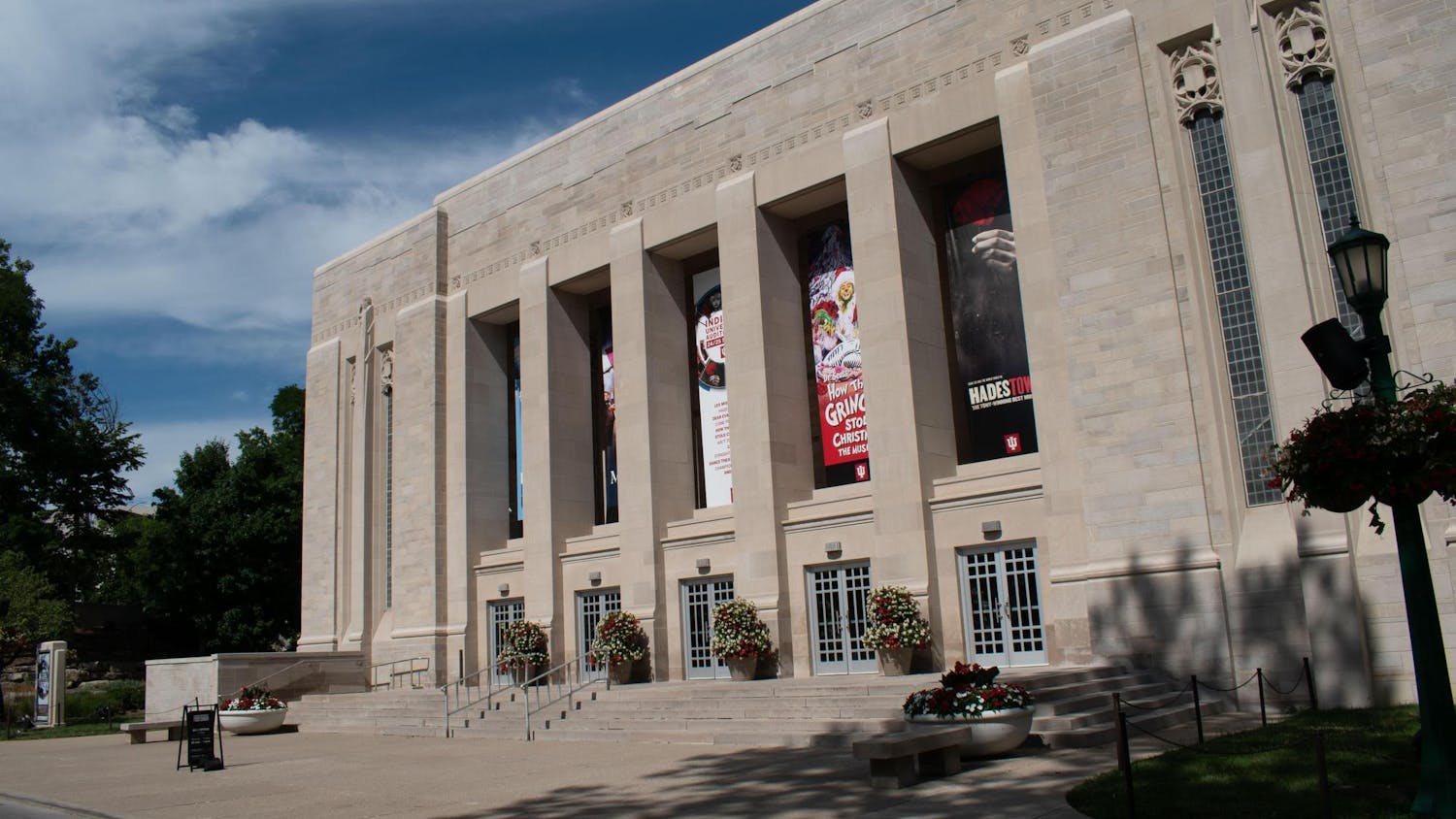You climb a tall set of stairs. Tiny sculptures and rooms dot the landscape below. The height is dizzying. Before you is a solemn mask obscuring a woman's face. Her eyes are closed and a steady "om" reverberates from her clenched mouth. As you step forward you are consumed in her mouth and engulfed by a dark tunnel. The subconscious ramblings of this mystical lady echo all around you.\nYou are not in a dream, nor are you tripping on acid. You are experiencing the art of Margaret Dolinsky and the CAVE program. \n"The CAVE program actually responds to the visitor," said Dolinsky, a professor at the Henry Radford Hope School of Fine Arts. "It is critical that the visitor is there reacting to pieces in order to actualize the piece; the visitor becomes a co-creator."\nDolinsky discussed her work with CAVE projection systems this Wednesday at the IU Art Museum as part of its noon talk series. CAVE is a projection system typically displayed on four screens, three in front of the visitors and one on the floor beneath them. Two projectors deliver images on each screen, so with stereoscopic glasses the images appear to be 3-D. \n"There is no easy way to program an environment for CAVE," said Dolinsky, who came to IU in 1999 as a visiting assistant professor in the School of Fine Arts and as a research scientist in the Advancement of Information Technology laboratory. "We use lots of different software, this is heavy-duty equipment."\nDolinsky praised IU's high-tech networking and Internet connections for making this kind of research possible, not just for her but for firms across the world. During the talk she showed footage from a test in Amsterdam that utilized IU's networking capabilities. \n"The development period in this field has been so short," said Jerald Jacquard, a sculptor and faculty emeritus from the School of Fine Arts who attended the program. "Its hard to project what it can be used for but she is one of the few people doing artistic things with it."\nAcross the country CAVE is primarily used for visualizing complex math formulas, chemical or biological structures and military simulations. Dolinsky described a simulation of Baghdad complete with bullet holes in the walls and streets that rumbled as trucks passed by. She prefers metaphor and iconography over realism in her programs.\n"With very realistic graphics the visitor never loses the suspension of disbelief," Dolinsky said. "With abstract imagery the viewer must give over to the environment more of a sense of whimsy and display."\nThe rise of advanced digital art like the CAVE program may open up new artistic doors, but it also can create new problems for museum curators.\n"Digital media can cause challenges in a traditional museum setting partly because most museum buildings were built before the computer age, and wiring issues can be difficult, as can even having enough electrical outlets," Jenny McComas, the IU Art Musuem's curator of Western art after the 1800s, said in an e-mail. She organized both the Biennial Faculty Exhibit and oversaw this noon talk. \nThough Dolinsky does have an exhibit in the Biennial Faculty Exhibit, it is not a CAVE program. IU Bloomington's CAVE is being refurbished but will hopefully be open in time for an exhibit by Dolinsky's students the week after spring break. There is a full 4-screen CAVE in Indianapolis.\n"Computer graphics and technology offer another tool for artists and scientists to express data, truth and knowledge," Dolinsky said in an e-mail. "It is a unique tool that's opens vast opportunity for the 21st century"
IU professor gives noon talk at IUAM on virtual art
Dolinsky explains her art, CAVE program
Get stories like this in your inbox
Subscribe





